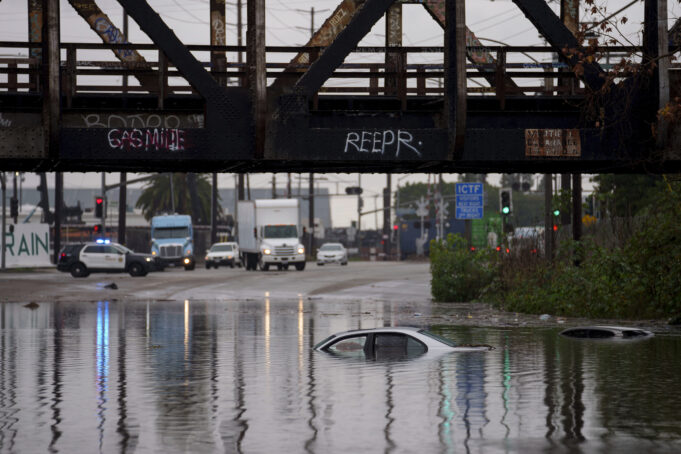LOS ANGELES—Heavy rain flooded roadways and much-needed snow piled up in the mountains on Feb. 1 as the first of back-to-back atmospheric rivers pummeled California.
The storm focused its energy on the southern and eastern parts of the state after initially hitting the San Francisco Bay Area on Jan. 31, where it halted cable car service.
The Los Angeles and San Diego areas were expecting a deluge of rain on Feb. 1, “especially for some of the higher elevations where they tend to get most of the rainfall—or the heaviest rainfall—with these atmospheric river events,” National Weather Service forecaster Bob Oravec said.
An atmospheric river is an area where “the moisture is more confined and the winds are stronger and pushing these higher moisture values on shore,” Oravec said.
Seal Beach, south of Los Angeles, saw flooding along the Pacific Coast Highway on Feb. 1 that closed parts of the freeway at times, with one white van stranded at an intersection.
The California Governor’s Office of Emergency Services activated its operations center and positioned personnel and equipment in areas most at risk from the weather.
Brian Ferguson, the office’s deputy director of crisis communications, characterized the situation as “a significant threat to the safety of Californians.” He said an area stretching from the state’s border with Oregon all the way South to San Diego and from the coast into the mountains could be affected over the next 10 to 14 days.
On Jan. 31, southern Los Angeles County was hit hard by flash flooding. Vehicles plowed through water on low-lying sections of freeways and at least one underpass beneath a rail crossing in Long Beach was inundated, submerging a car. (AP)













